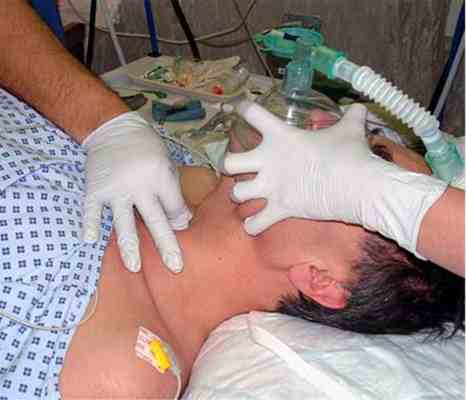Rapid sequence induction (RSI) is used when a patient is at particular risk of aspiration of gastric contents at induction of anaesthesia. Following loss of consciousness, cricoid pressure is applied and ventilation by facemask is avoided to prevent the possibility of gas inadvertently going down the oesophagus, distending the stomach and leading to regurgitation.
Preoxygenation is therefore an essential part of the sequence to ensure adequate oxygenation during the time the patient is apnoeic, while the muscle relaxants are taking effect and intubation is performed.
Should problems with intubation occur, mask ventilation becomes necessary to maintain oxygenation.

Cricoid pressure being applied as part of rapid sequence induction